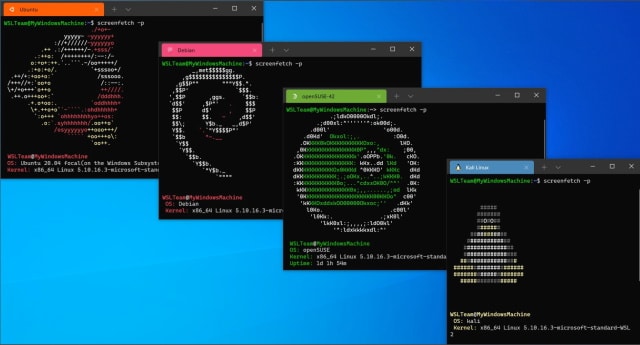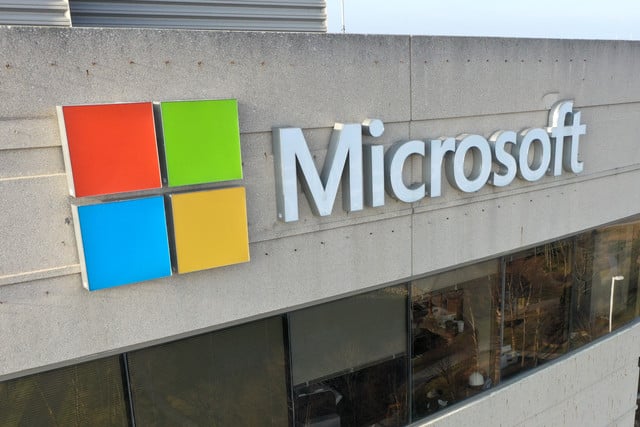
Hackers can now bypass Linux security thanks to terrifying new Curing rootkit
Most Linux users assume their security tools will catch bad actors before damage is done -- but sadly, new research suggests that confidence may be misplaced. You see, ARMO, the company behind Kubescape, has uncovered what could be one of the biggest blind spots in Linux security today. The company has released a working rootkit called “Curing” that uses io_uring, a feature built into the Linux kernel, to stealthily perform malicious activities without being caught by many of the detection solutions currently on the market.
At the heart of the issue is the heavy reliance on monitoring system calls, which has become the go-to method for many cybersecurity vendors. The problem? Attackers can completely sidestep these monitored calls by leaning on io_uring instead. This clever method could let bad actors quietly make network connections or tamper with files without triggering the usual alarms.

Chimera Linux 20250214 update launches with new apk-tools, Kernel 6.13, and official PowerPC support
Just in time for Valentine’s Day, the much-anticipated 20250214 update for Chimera Linux is here! This version introduces an improved package manager, a more modern kernel, and broadened hardware compatibility.
A key highlight is the upgrade to apk-tools, now boasting variable expansion and a system-wide /usr file structure. This change simplifies mirror switching by eliminating the need for manual edits to repository configurations. Additionally, the update adopts a new v3-style index naming, ensuring backwards compatibility.

What happens to Linux when Linus Torvalds dies?
The Linux kernel is at the heart of countless operating systems, powering everything from smartphones to servers. At the center of its development for decades has been Linus Torvalds, a name synonymous with the project itself. But what would happen to the Linux kernel if Linus Torvalds were to suddenly pass away?
First, it’s crucial to recognize that while Torvalds is the most prominent figure in Linux development, the kernel itself is the product of a vast, global community of developers and maintainers. Over the years, Torvalds has overseen the direction and quality of the kernel, ensuring the code adheres to stringent standards and that the development process runs smoothly. However, he is not the only contributor by any stretch. Thousands of developers worldwide contribute code, bug fixes, and improvements to the project.

Ubuntu Linux 25.04 is called Plucky Puffin
Canonical took to Twitter today to announce the name of its next Ubuntu release: Plucky Puffin. Sticking with its tradition of alliterative animal names, this moniker for Ubuntu 25.04 joins the ranks of past versions like Groovy Gorilla and Jammy Jellyfish. While no specific details have been shared yet regarding what features or improvements Plucky Puffin will bring, the name alone is enough to generate buzz among Linux enthusiasts.
Ubuntu has consistently delivered updates that focus on performance enhancements, security improvements, and new features. With each release, Canonical strives to make Ubuntu more accessible and powerful for both casual users and enterprise environments. However, it will be interesting to see if Plucky Puffin offers any major new developments or simply improves existing features. The Linux community will undoubtedly be watching closely for any signs of innovation.

Ready to leave Windows 11? Solus Linux 4.6 is the gorgeous alternative you deserve
The Solus team has officially launched Solus 4.6 “Convergence,” offering a refreshed Linux experience that brings desktop environment updates, kernel improvements, and enhanced hardware support. For those looking for an alternative to Windows 11, Solus 4.6 provides a compelling option, especially for users interested in performance, customization, and open-source software.
In this release, Solus includes updated ISOs with file names that now reflect the release channel and the date of generation. The OS continues to offer popular default applications, such as Firefox 131.0.3, LibreOffice 24.2.5.2, and Thunderbird 128.3.1, ensuring users have the essential tools out of the box. For multimedia, Budgie and GNOME editions come with Rhythmbox for audio and Celluloid for video playback, while XFCE features Parole and Plasma opts for Elisa and Haruna.

Linux 6.11 released
Linux 6.11 is now available. In his announcement, Linus Torvalds mentioned that the release was largely uneventful, with the majority of patches being relatively small and focused. Torvalds highlighted that the most prominent update in this release is the addition of Hyper-V Confidential Computing documentation.
Torvalds, who is currently on the road in Vienna, noted that while the merge window for the next release cycle opens tomorrow, progress might be slower than usual due to his participation in Open Source Summit Europe and the Kernel Maintainer Summit. He has over 40 pull requests pending but asks for patience as he works through them.

Google makes Linux more secure
Google has taken a proactive step to bolster Linux security with the introduction of the counted_by attribute for flexible array members. This enhancement addresses a critical vulnerability in C programming related to buffer overflows, particularly those involving flexible array members whose sizes are determined at runtime.
Buffer overflows have long been a notorious source of security issues in software development. While sanitizers have mitigated some of these vulnerabilities by automatically inserting bounds checking, flexible array members have remained a challenging exception. The size of these arrays is typically opaque to the compiler, making it difficult to perform bounds checking outside the allocation function.

Native Spectre v2 exploit puts Intel systems running Linux at risk
It's been some time since we discussed the initial Spectre security flaw that impacted numerous CPUs, and which was subsequently followed by the Spectre v2 vulnerability. Now there are new concerns following the discovery of the first native Spectre v2 exploit against the Linux kernel.
Researchers from the Systems and Network Security Group at Vrije Universiteit Amsterdam (VUSec) have demonstrated that Intel CPUs running Linux are vulnerable to Native Branch History Injection (BHI). VUSec says its InSpectre Gadget tool can be used to "not only uncover new (unconventionally) exploitable gadgets in the Linux kernel, but that those gadgets are sufficient to bypass all deployed Intel mitigations".

Linux 6.9-rc1 provides a glimpse into the future of the open source kernel
Linus Torvalds has officially announced the release of Linux 6.9-rc1, marking the end of the merge window for this version. As usual, the update brings a ton of changes, with a significant portion attributed to AMD GPU header files. But let's not get bogged down by the sheer volume of these updates; the real excitement lies in the core improvements that promise to enhance the kernel's performance.
Two major updates steal the spotlight in this release: the timer subsystem and the workqueue subsystem. The timer subsystem has undergone a substantial rewrite, introducing per-CPU timer wheels. This enhancement is poised to boost the performance of timers, which is especially crucial for networking operations. On the other hand, the workqueue subsystem now supports BH workqueue support, providing a much-needed alternative to the long-deprecated tasklet interface.

Linux Mint 21.2 Cinnamon (Edge) Edition now available for modern computers
Hey folks, we’ve got some cool news from the Linux Mint camp. They’ve just dropped a Cinnamon (Edge) Edition variant of Linux Mint 21.2. Now, this isn’t your regular update; it’s tailor-made for those of us with the shiny, new hardware that doesn’t quite jive with the older 5.15 LTS kernel in the usual Linux Mint 21.x versions. Instead, this “Edge” edition is rocking the newer 6.2 kernel. Oh, and guess what’s making a comeback? Support for Secureboot!
If you’ve been hitting a wall trying to boot or install Linux Mint because your hardware is fresh off the shelf, this “Edge” ISO image could be your ticket out of tech purgatory. Every now and then, Linux Mint throws us a bone with an “edge” ISO image on top of its regular ones for the latest release. This special image is loaded with newer bits to play nice with the latest hardware gadgets and gizmos out there.

Download Debian 12 Bookworm-based Sparky 7.0 'Orion Belt' Linux distro now
If you are a fan of the Sparky Linux distribution, I have some exciting news-- version 7.0 is finally available for download. This release is based on -- and fully compatible with -- the Debian 12 "Bookworm" operating system. For users with ancient hardware, Sparky 7.0 still provides support for x86 (32-bit) machines. But seriously, folks, just buy a 64-bit PC already...
By leveraging the stability and reliability of Debian, Sparky 7.0 inherits a rock-solid base that ensures a smooth and secure user experience. This compatibility allows users to seamlessly access the extensive Debian software repositories, opening up a world of possibilities for software installations and updates.

Netrunner Linux distro ain't dead after all
Netrunner is one of my absolute favorite Linux distributions, but I haven’t been recommending it to people lately. Why? Well, to be honest, I thought the operating system was dead. You see, the last time the developers released a new version of Netrunner was early 2021. I assumed development had ended. The year 2022 came and went without any substantial Netrunner news.
But no, Netrunner lives! Out of the blue, a new version of the KDE-focused operating system is made available for download. Code-named "Vaporwave" (no, not vaporware), Netrunner 23 is based on Debian 11 "Bullseye" stable for the first time. Yes, fans of Netrunner can finally have modern Debian.

Microsoft gives Windows Subsystem for Linux a new icon, fixes issues and updates kernel
Microsoft has just released the latest preview version of Windows Subsystem for Linux, bringing with it a lengthy changelog.
With the launch of Windows Subsystem for Linux Pre-release 0.50.2.0, Microsoft has introduced a new icon (featuring, of course, a penguin), but there's far more to this release than just this visual update. The latest version fixes various WSL issues, updates the Linux kernel, and includes numerous other changes and additions.

Sequoia: Linux kernel security flaw gives unprivileged users root access
A vulnerability has been discovered in the Linux kernel that makes it possible to gain root access on a number of popular distributions, including Ubuntu, Debian and Fedora. The flaw has been named Sequoia, and it exists in the filesystem layer.
The security issue is thought to affect all versions of the Linux kernel released since 2014, meaning that a large number of distros are vulnerable. Specifically, the flaw is a size_t-to-int type conversion vulnerability that can be exploited to elevate privileges.

Microsoft is working towards running Linux as ARM64 Hyper-V guest
Microsoft's love affair with Linux has been developing in recent years, and has now reached the stage of being a serious relationship. Such is Microsoft's commitment that the company is now actively involved in contributing to the Linux kernel.
One of the latest updates sees the company shifting its focus slightly when it comes to Hyper-V. Its virtualization tool has thus far been largely fixated with x86_64, but now there is a move towards "running Linux as ARM64 Hyper-V guest".
